Decode how AI is reshaping careers in 2026 with our Head of AI Programs in a LIVE online session. Register Now.
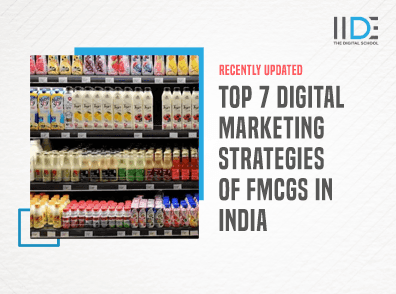
Updated on Dec 11, 2025
Share on:
The massive shift to a digital marketing strategy due to the increase in screen time on our mobiles and laptops as we slowly abandon old mediums of communication such as TV and radio. Combined with the rise of eCommerce stores and advancements in logistics, customers now want to buy everything online and from the convenience of their home. In this digital world, a comprehensive full-fledged digital marketing strategy is a necessity for FMCG brands.
The students at IIDE work on several projects during their training and get hands-on experience of the industry’s inner workings. They learn how to think from the user’s perspective as well as the brand’s perspective while coming up with viable solutions to business problems in this digital era.
The three case studies in this article are adapted from the final projects of the following students:
- Real Fruit Juice- Lisha Porwal & Rishita Hindocha
- BBlunt Cosmetics- Aditi Khandelwal & Namrata Dubey
- Veeba Ketchup- Shrey Dagli
Their work, from conducting in-depth research to creating viable business solutions and strategies, is full of insights, deep learning and showcases a great understanding of digital marketing strategies and their implementation.
Let us now begin our learning by first understanding a bit more about FMCGs in India.


Learn Digital Marketing for FREE


FMCG Digital Marketing Strategy Case Studies
Now that we have learned the various forms of digital marketing strategies that can be employed by the FMCGs to better attract customers, let us now look at some research and FMCG case study examples on how we can apply these tactics and strategies we learned to real-life situations.
All these strategies that we are presenting are solutions created by our brilliant students. They have taken up top brands in India and done in-depth research about the brands and come up with innovative solutions, using these latest trends and strategies to make holistic digital marketing strategies.
For this article we have picked our favourite FMCG presentations by our students, showcasing different strategies in three separate spheres of digital marketing. You can even download free FMCG case studies.
1. Real Fruit Juice- ORM and Paid Marketing:
Real Fruit Juice is one of India’s most trusted and oldest FMCG brands and a household name. Launched in 1997, the fruit juice is one of the most recognised brands in India. Serving millions, the juice is now sold to customers through the medium of eCommerce and websites. To keep pace with the changing world, they require digital marketing to maintain the market share. We now look at the deep insights collected by our students regarding Real Fruit juice and proposed solutions to improve their website through search engine optimization. Our student has created an entire sample digital marketing plan for Real Fruit Juice.
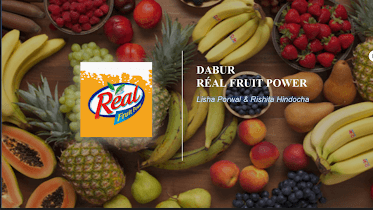
a. Research and Competitor Analysis
To better assess the brand at hand, we will first look at the current state of digital marketing is done by them. We will look at the competitors of Real Fruit Juice and the digital marketing presence of these FCMGs.
SWOT Analysis
SWOT Analysis or Strength Weakness Opportunity and Threats analysis is a method of charting out what a company does best and what are the factors it should be worried about. It helps in giving a good overview of the state of the company.
Real Fruit has an excellent offline and word of mouth presence, but their approach to digital marketing has been poor and their after-sales online relations management very stale.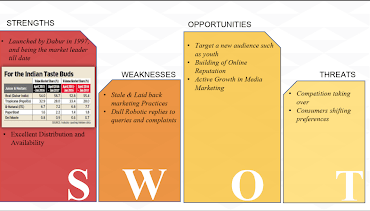
Website Analysis
A website is the online address of a company, everyone visits the main website of any company before they make an online purchase. Most companies host eCommerce portals on their websites as well, making it a crucial part of any marketing strategy to focus on the website building and search engine optimization.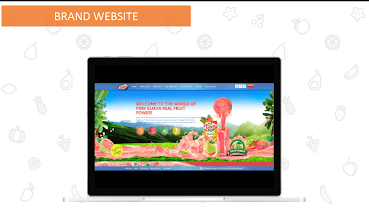
Dabur’s website (Real Fruit Juice’s parent company) is decently well built and targets a wide variety of keywords and has good domain authority. This shows they can capture a big amount of users through just organic posts.
Now looking at the negative aspects of the website, nearly half of the people return from the website very quickly (bounce rate) and loading time is a whopping 8. 12 seconds. This shows that the website is not user friendly.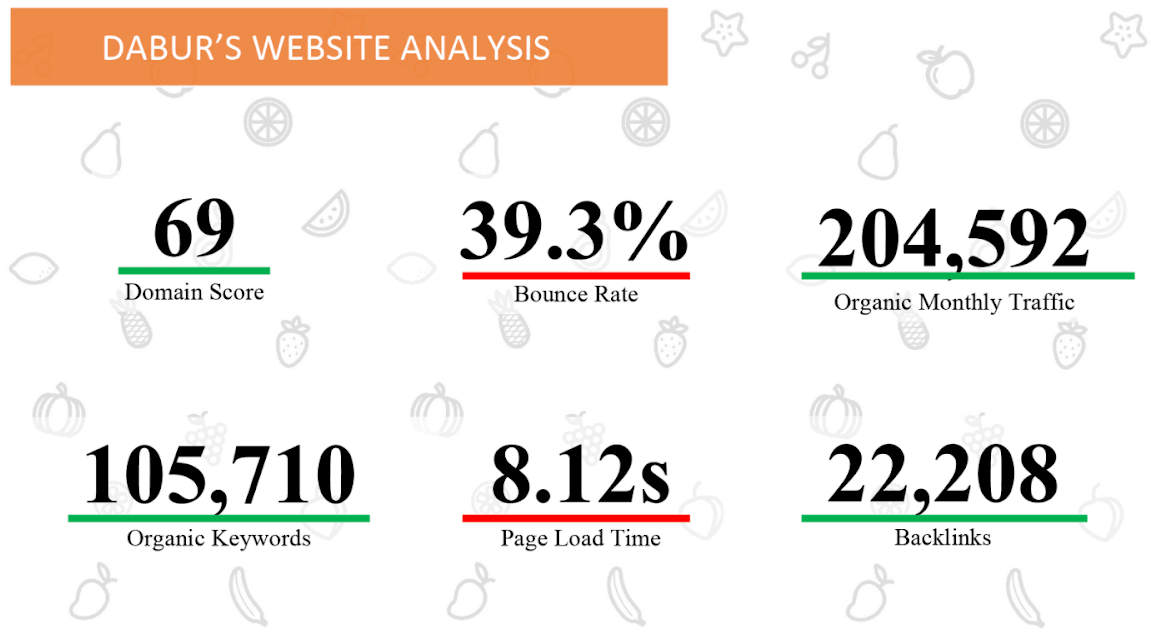
Social Media Presence
Many companies create social media profiles but due to lack of concentrated effort and strategy, the profiles tend to underperform. Real suffers such a situation especially on Instagram, YouTube and Pinterest.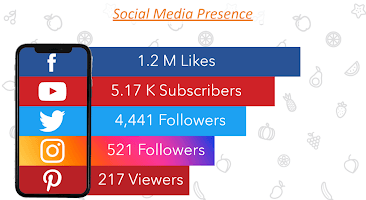
Competitor Analysis
Real Fruit Juice faces its main competition from Tropicana and Paper Boat. Both these fruit juice companies have comparable quality and offer unique propositions to the consumer. When comparing the social media presence, Real fairs badly against its competitors.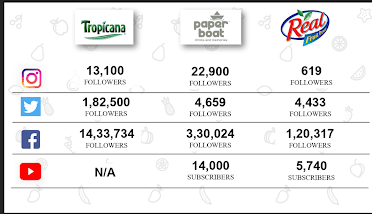
b. Solution Strategy Proposed
As identified earlier, real juice suffers from weak ORM and online presence. The student team has identified these pain points and created the following solutions. These strategies are only a part of the sample multi-channel marketing plan they have created for these FMCG products.
Online Reputation Management
The most engaged and interested customers leave comments on websites such as Amazon And Grofers on products they bought earlier. According to surveys, 78% of consumers trust reviews as much as personal recommendations. This makes ORM very crucial, especially for physical products.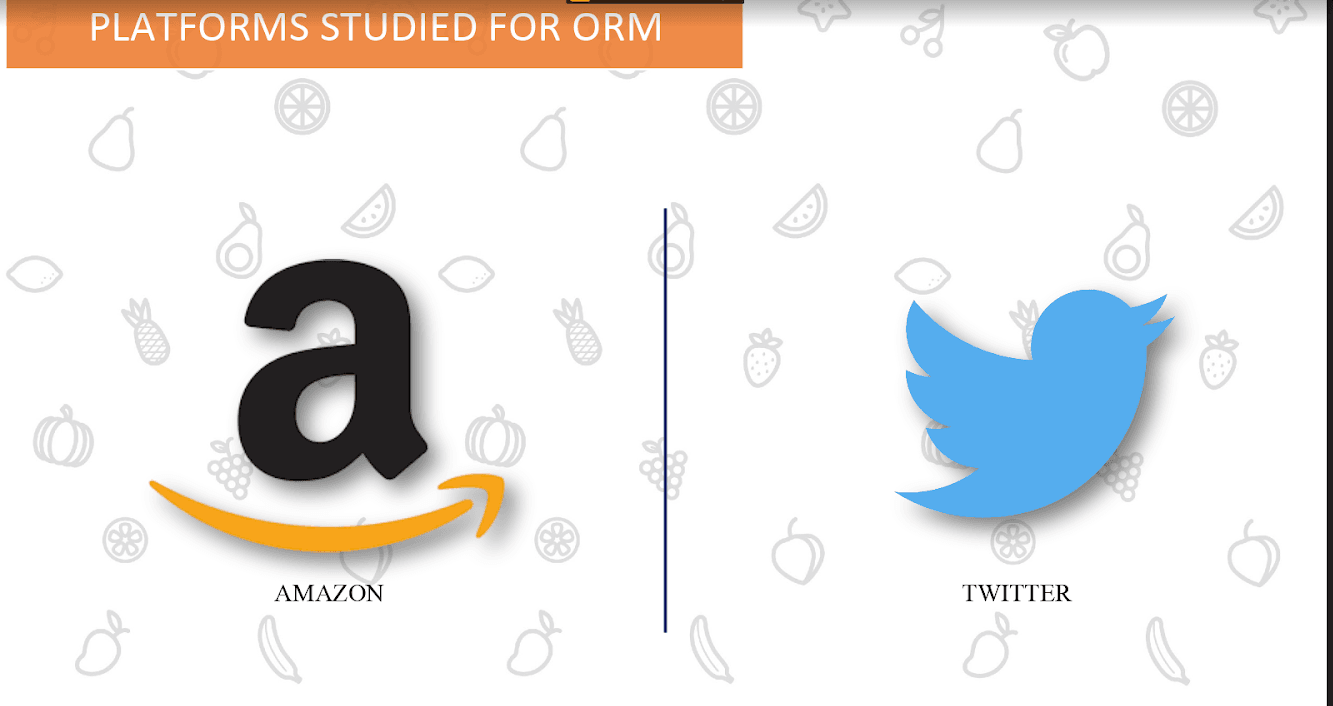
To every good review and bad review, a reply and engagement is a must. The student team has created a certain case study replies to showcase how engaging ORM should be a must for Real Fruit Juice digital marketing strategy.
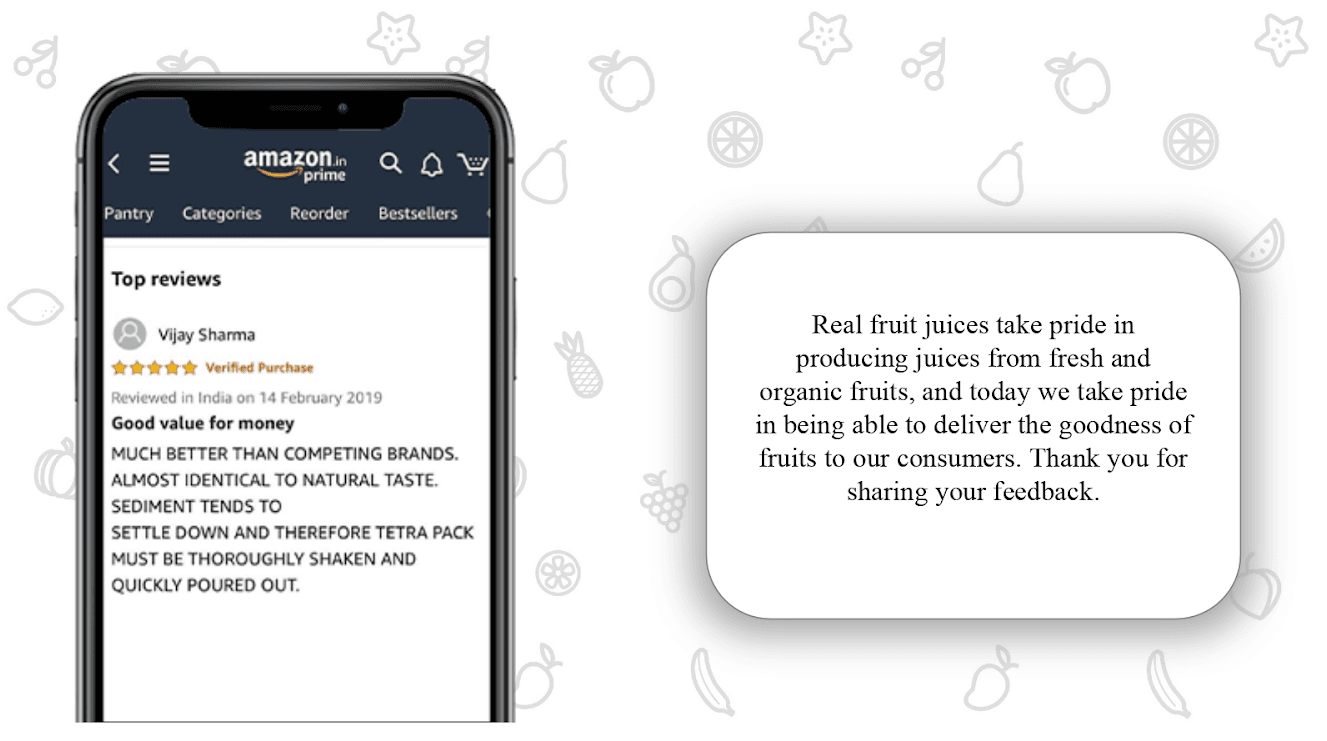
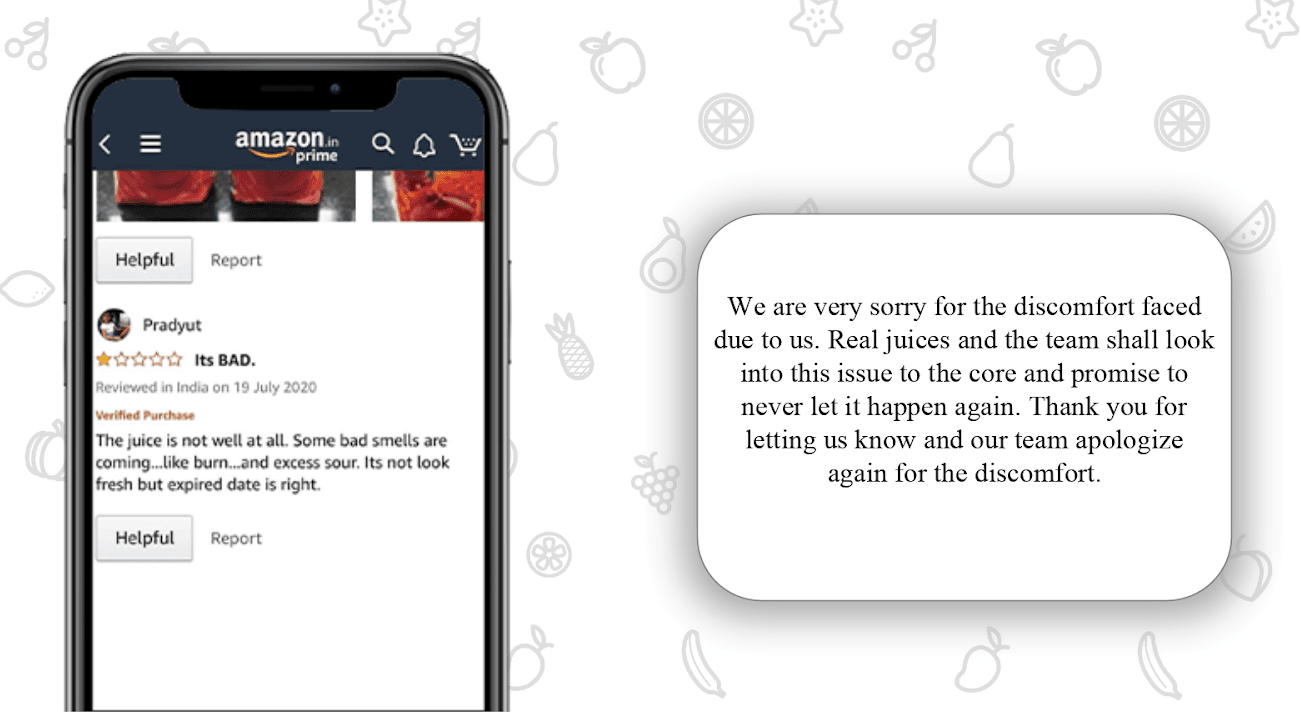
Paid Posts
All platforms collect customer data and their interests. A company can make more targeted and differentiated ads for each customer of different interests and appeal to them personally. Paid posts are a great way to acquire new and high-quality customer leads for your brand. Here are the ad seats and customer targeting parameters for each ad:
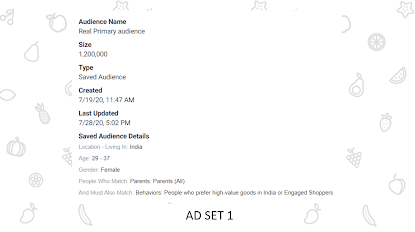
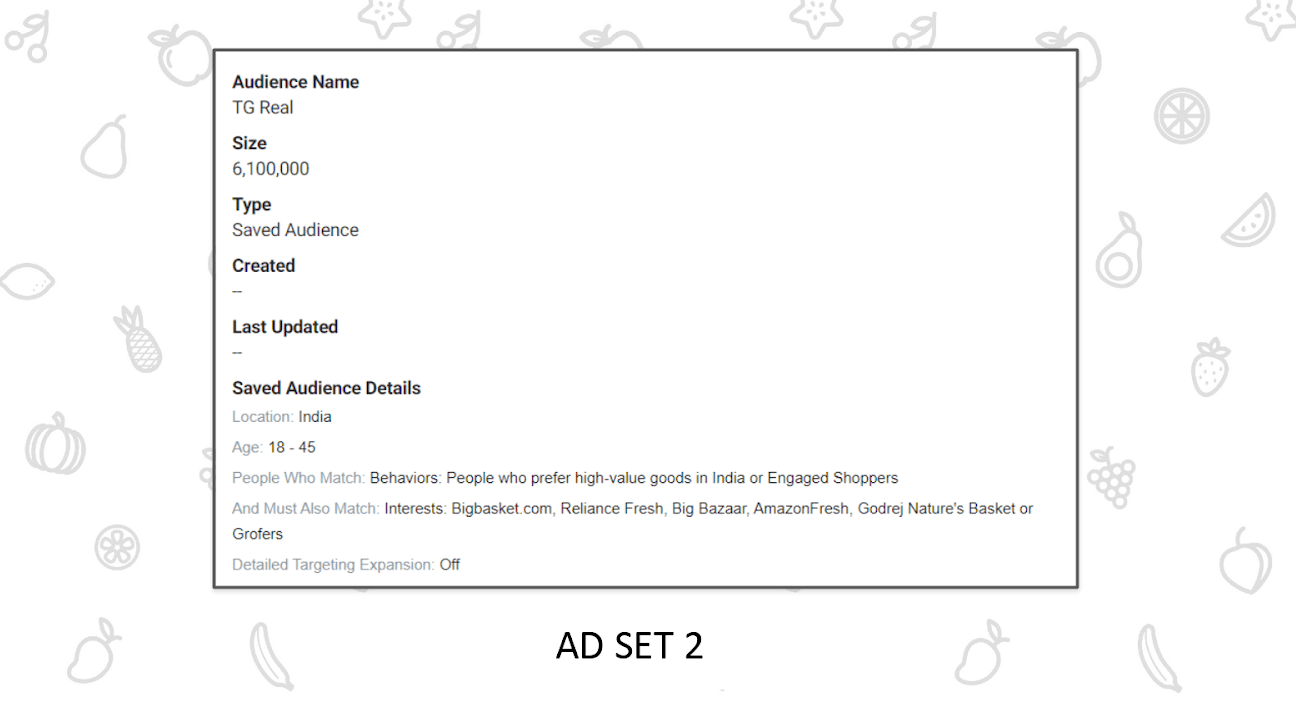
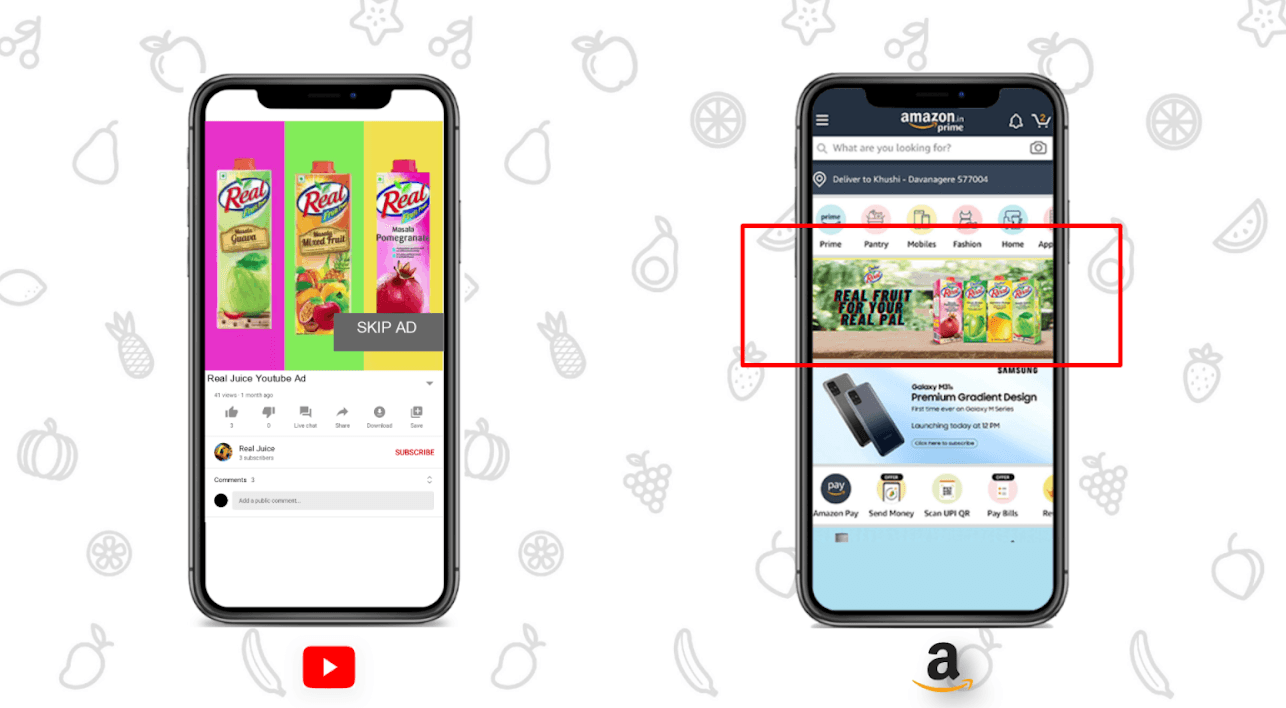
2. BBlunt- Email Marketing
BBlunt is a trending salon/ fashion brand, offering professional haircuts and high-quality fashion products. Started in 1994, the brand started as a fashion salon. With rise success and fame, it entered the world of beauty products, especially focusing on hair products. They have created a brilliant sample digital marketing plan for FMCG cosmetic products.
Want to Know Why 2,50,000+ Students Trust Us?
Dive into the numbers that make us the #1 choice for career success

MBA - Level
Post Graduate in Digital Marketing & Strategy
Best For
Fresh Graduates
Mode of Learning
On Campus (Mumbai & Delhi)
Starts from
Jan 5, 2026
Duration
11 Months
Live & Online
Advanced Online Digital Marketing Course
Best For
Working Professionals
Mode of Learning
Online
Starts from
Dec 19, 2025
Duration
4-6 Months

Online
Professional Certification in AI Strategy
Best For
AI Enthusiasts
Mode of Learning
Online
Duration
5 Months
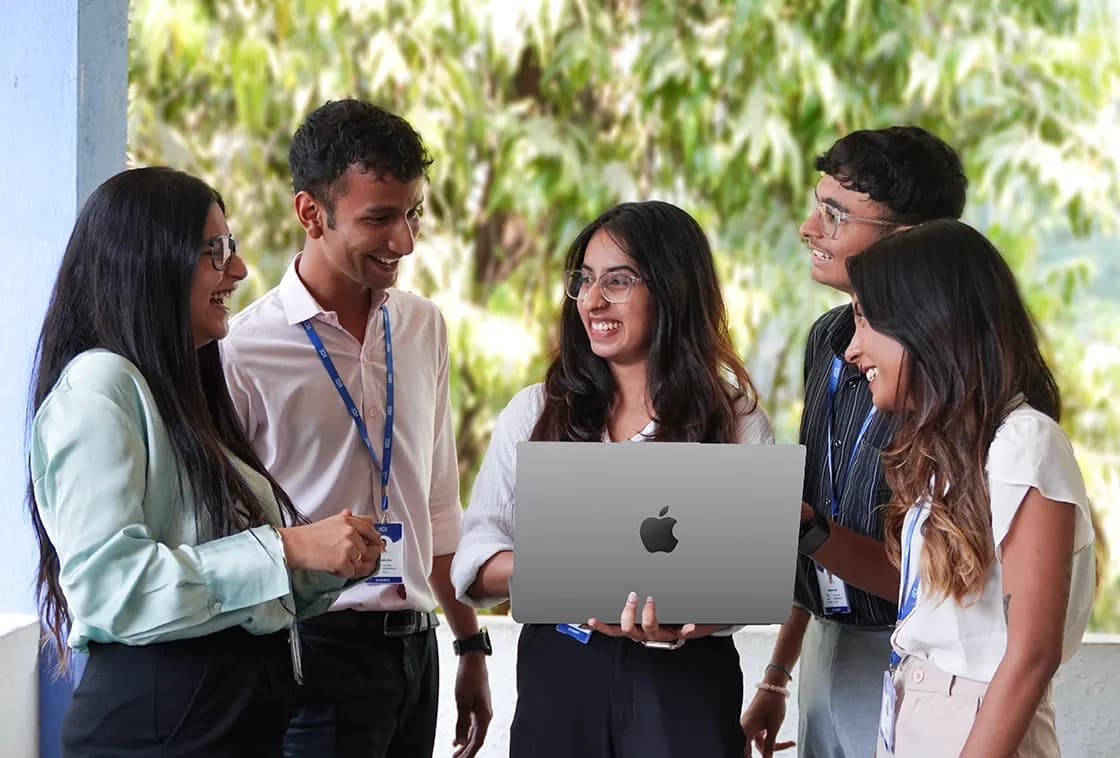
Offline
Undergraduate Program in Digital Business & Entrepreneurship
Best For
12th Passouts
Mode of Learning
On Campus (Mumbai)
Duration
3 Years
Recent Post
Aditya Shastri leads the Business Development segment at IIDE and is a seasoned Content Marketing expert. With over a decade of experience, Aditya has trained more than 20,000 students and professionals in digital marketing, collaborating with prestigious institutions and corporations such as Jet Airways, Godrej Professionals, Pfizer, Mahindra Group, Publicis Worldwide, and many others. His ability to simplify complex marketing concepts, combined with his engaging teaching style, has earned him widespread admiration from students and professionals alike.
Aditya has spearheaded IIDE’s B2B growth, forging partnerships with over 40 higher education institutions across India to upskill students in digital marketing and business skills. As a visiting faculty member at top institutions like IIT Bhilai, Mithibai College, Amity University, and SRCC, he continues to influence the next generation of marketers.
Apart from his marketing expertise, Aditya is also a spiritual speaker, often traveling internationally to share insights on spirituality. His unique blend of digital marketing proficiency and spiritual wisdom makes him a highly respected figure in both fields.
